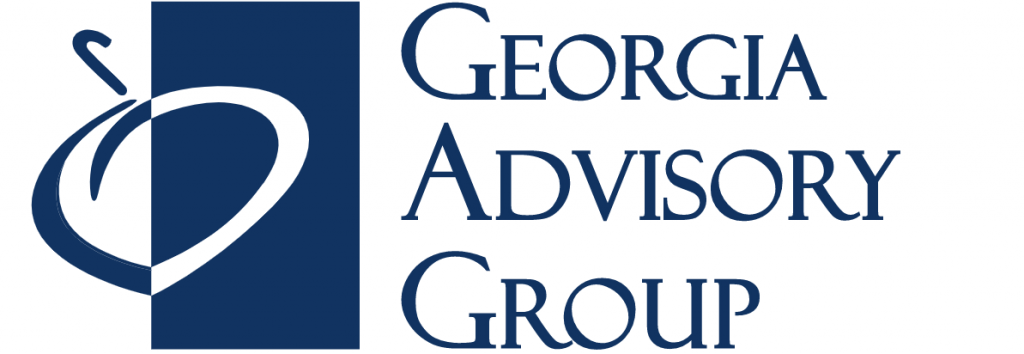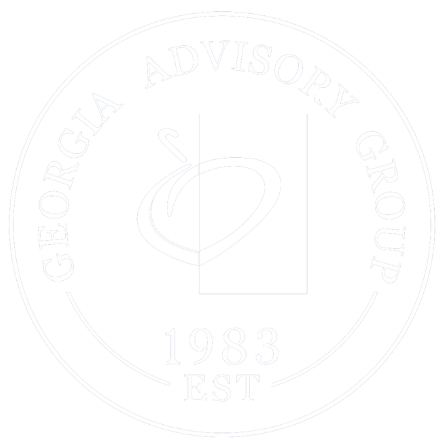What are the 3 Major steps to Reduce Failure in Retirement?
A ladder approach is the answer to a successful retirement. Let me show you why. I’m giving you three first steps to take to reduce failure in retirement. Hello again, Dave Dooley here with the Georgia Advisor Group, a full-service wealth, income, and tax management firm. We have been getting families on the right road ahead for over 40 years. We’ve worked with families to show them simple solutions when approaching retirement. Let’s talk about the reality and not miss when it comes to figuring out the best road to travel when it comes to investing and creating income in retirement, or more importantly, leading up to retirement.
First, the facts. 98% of people, when they come to see us, typically have IRAs, rich and cash-poor. I’ll spend a few minutes here discussing why this can get you in trouble if certain steps are not taken to remedy this. Secondly, most people have way too many accounts. In addition, way too many positions in those accounts to track performance and even get a grip on understanding why they continue to underperform professional money managers. Third, and one of the most important areas to consider, is protection. Covering your backside from market or political decisions that you have no control over can devastate your portfolio prior to or in retirement. These factors constantly change on a regular basis.
So, let’s dive into step number one: IRA rich and cash-poor. Now, this is not surprising because many of us over the years have placed most of our savings and investments in 401(k) or 403(b) type plans that were company-sponsored plans that would match a portion of your pre-tax dollars. The rest of your paycheck came home to be spent on living expenses such as a mortgage, rent, cars, groceries, college, and so on. These dollars you saved cannot be touched until 59 and a half, and therefore, over the years, they became your so-called nest egg. Your cash or after-tax dollars were used to survive.
Therefore, we see clients with large IRA accounts and hardly any cash for income purposes or emergencies, travel, or entertainment. Many people tell me about the equity in their home that is paid for or near completion on the mortgage. But the fact is, these qualified accounts, now during the distribution phase, are fully taxable as ordinary income. The so-called equity in your home sounds good, but in most cases, even if you downsize, you will roll most of that to your new home, and therefore, it does you no good in generating additional income.
The real-life approach is taking a percentage of the IRA dollars and placing them in some type of guaranteed income bucket to protect principal first and foremost, and then generate any shortfall from any pension or Social Security you may have to continue or try to continue the lifestyle you’ve been accustomed to. Let’s take a snapshot of what I’m talking about here. Assume you have $750,000 in your IRA account, including your 401(k)s you’ve accumulated over the years. In addition, you have another $250,000 in savings or investment accounts. Now, we have a total of $1 million to generate income with. Now, we can take the approach that most firms do, which is to say, “Let’s get this in the market and try to get a 20% return, and we’ll create $200,000 of income, and you’re all set.” That sounds great in theory, but it’s a myth.
Once we understand your reports, shortfall monthly income, as an example, let’s just say it’s $3,000 monthly. Or we need to generate $3,000 in addition to your Social Security expansion. Now we need to calculate how much of the $750,000 we need to set in a self-pension plan to guarantee that type of income each month, regardless of what the market does, up or down. You cannot outlive it. Many will say at this point, “Wait, he’s talking about an annuity.” Ask yourself a simple question: What is my Social Security? I’ll give you a minute. That’s right, an annuity. This is where you’ve paid premiums over a long period of time, and at 62, 67, or 70, you begin drawing a lifetime income. Imagine if you can double or triple that income for life. And more importantly, if you die, unlike Social Security where your benefits stop, they continue for your spouse or your family. Any balance left over, unlike Social Security, goes to your spouse or your family.
So now that we’ve got you squared away on that topic, we need to start and take that income. We need to not just grow annually but keep it up with inflation and increase it on a continuous basis with returns in the market. We need to consider the tax implications on that income as well because these dollars are fully taxable from your IRA account. So, we may need to set aside $500,000, for example, of the $750,000 to accomplish our goal in this particular example. Now, this leaves you with $250,000 in your IRA and another $250,000 in your cash account for all the additional retirement needs that are going to come towards us.
These dollars need to be placed in actively managed accounts that have protection from market swings that are out of your control. This is the ladder approach I mentioned at the beginning of the video. Throwing it all in a bunch of mutual funds and hoping for the best is the worst mistake you can make.
Now, the next step is consolidation. Getting these accounts: your 401(k), 403(b), IRAs, raw savings, investment accounts consolidated. Most families we meet will have way too many accounts scattered everywhere. There is no way to track performance or cover your positions when we’re all over the place. Most DIYs or do-it-yourselfers are the worst.
Every study out there tells us that they underperform professional money managers 75% of the time. That’s huge. Most new people we meet get organized within a matter of a few weeks, get their accounts in proper order. They make a comment about how relieved they are in getting this done and organized. And that leads me to the most important aspect of planning in retirement, which is protection.
I have countless videos walking you through why using options is the best way to ensure against major swings in the market that you have no control over. It amazes me that people get so stuck in their ways. They are not willing to continue to learn new ways to secure their portfolios using financial tools that have been available for years. These are simple ways to control outcomes that are predictable and cost-effective. The issue is they are all sold a bill of goods, thinking that diversity is a great way to avoid risk or they can outperform by timing the markets. This creates anxiety and an emotional approach to investing that never has a good outcome.
So, let’s recap what I’ve covered so far. Number one, take a ladder approach to retirement income and investing. Number two, consolidate to track performance and narrow your focus. Number three, protect your money. You insure your home, your car, health, and life. Why in the world would you not cover your largest asset, your retirement money? If you like the content in this video, give it a like below and, more importantly, subscribe. You’ll be notified every time we release a new video. Visit our website posted at www.gaadvisorygroup.com, where you’ll find a wealth of great content related to this video that you can watch at your leisure. Until next time.


